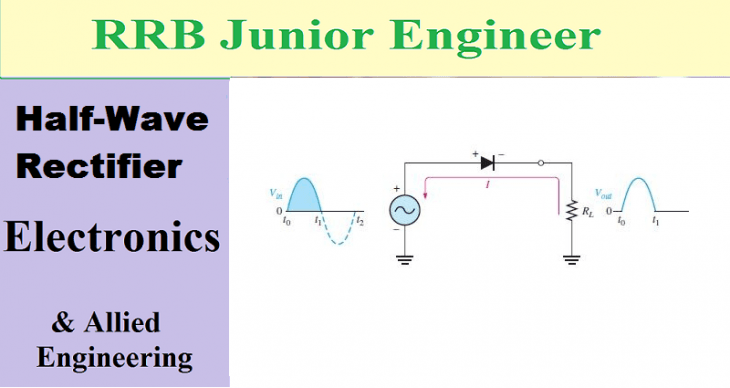
Contents
Rectifiers
Because of the ability of diode to conduct current in one direction and block current in the other direction, It is used in circuits called rectifiers. Half Wave Rectifiers are one of the classification of these rectifiers. Rectifiers convert ac voltage into dc voltage. They are found in all dc power supplies that operate from an ac voltage source. Lets check an example

The rectifier can be either a half-wave rectifier or a full-wave rectifier. The rectifier converts the ac input voltage to a pulsating dc voltage, called a half-wave rectified voltage. The filter eliminates the fluctuations in the rectified voltage and produces a relatively smooth dc voltage. The regulator is a circuit that maintains a constant dc voltage for variations in the input line voltage or in the load.
Half wave rectifiers

Half wave rectifiers
In a half-wave rectification process, A diode is connected to an ac source and to a load resistor, RL, forming a half-wave rectifier. Let’s find what happens during one cycle of the input voltage.

When the sinusoidal input voltage (Vin) goes positive, the diode is forward-biased and conducts current through the load resistor. The current produces an output voltage across the load RL, which has the same shape as the positive half-cycle of the input voltage.

During negative half cycle, half wave rectifier
When the input voltage goes negative during the second half of its cycle, the diode is reverse-biased. There is no current, so the voltage across the load resistor is 0 V. The net result is that only the positive half-cycles of the ac input voltage appear across the load.
Average Value of the Half-Wave Output Voltage
The average value of the half-wave rectified output voltage is the value that we would measure on a dc voltmeter.

Average value is approximately 31.8% of Vp for a half-wave rectified voltage. Click here to get the derivation of this equation.

rectified signal
Effect of the Barrier Potential on the Half-Wave Rectifier
Above we considered diode as an ideal device. When the practical diode model is used with the barrier potential of 0.7 V. The positive half-cycle, the input voltage must overcome the barrier potential before the diode becomes forward-biased. This results in a half-wave output with a peak value that is 0.7 V less than the peak value of the input refer below image.

Peak Inverse Voltage
Peak Inverse Voltage or PIV is the maximum voltage that can be applied under reverse biased condition of the diode, with out any failure. PIV of half wave rectifier is equal to peak voltage.

Transformer Coupling in half wave rectifier
We can see a transformer coupling in rectifier. Input from the source is coupled to the rectifier through rectifier. It have two advantages.
- It allows the source voltage to be stepped down
- AC source is electrically isolated from the rectifier, thus preventing a shock hazard in the secondary circuit.